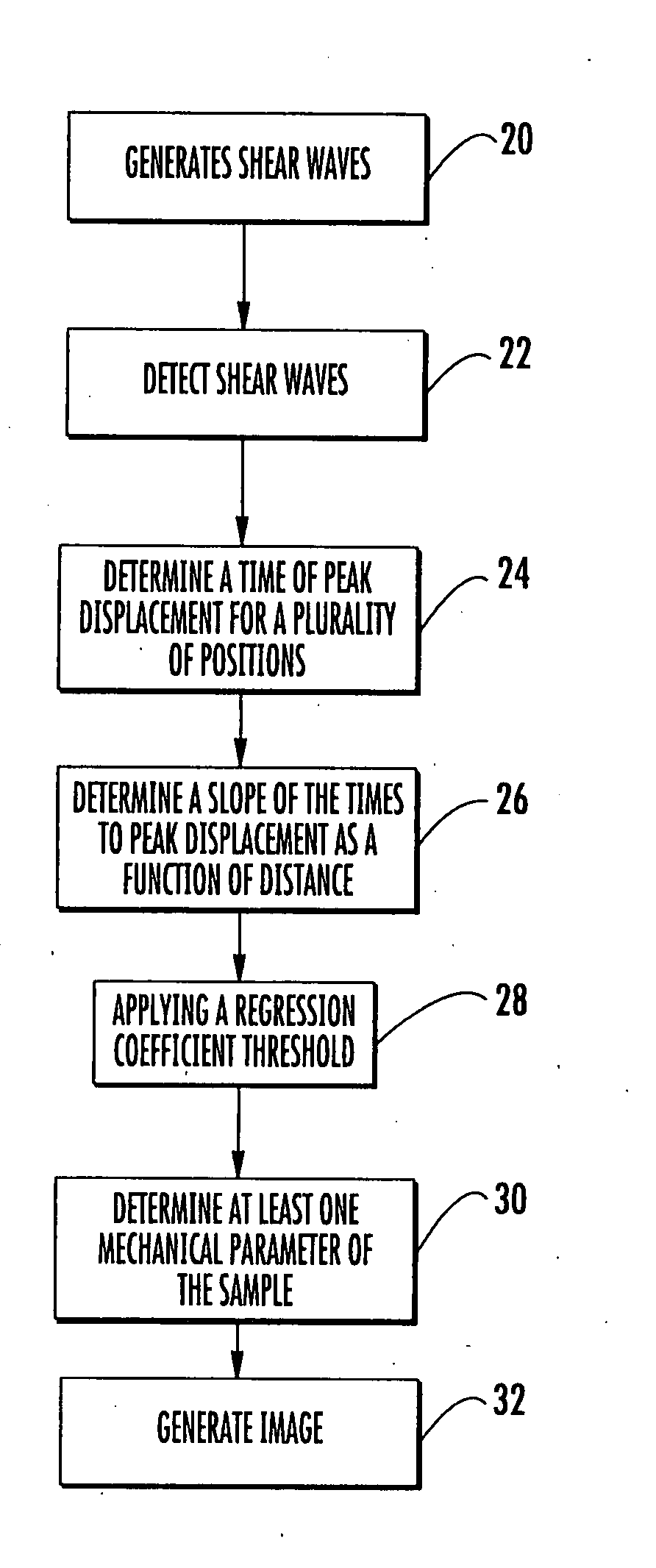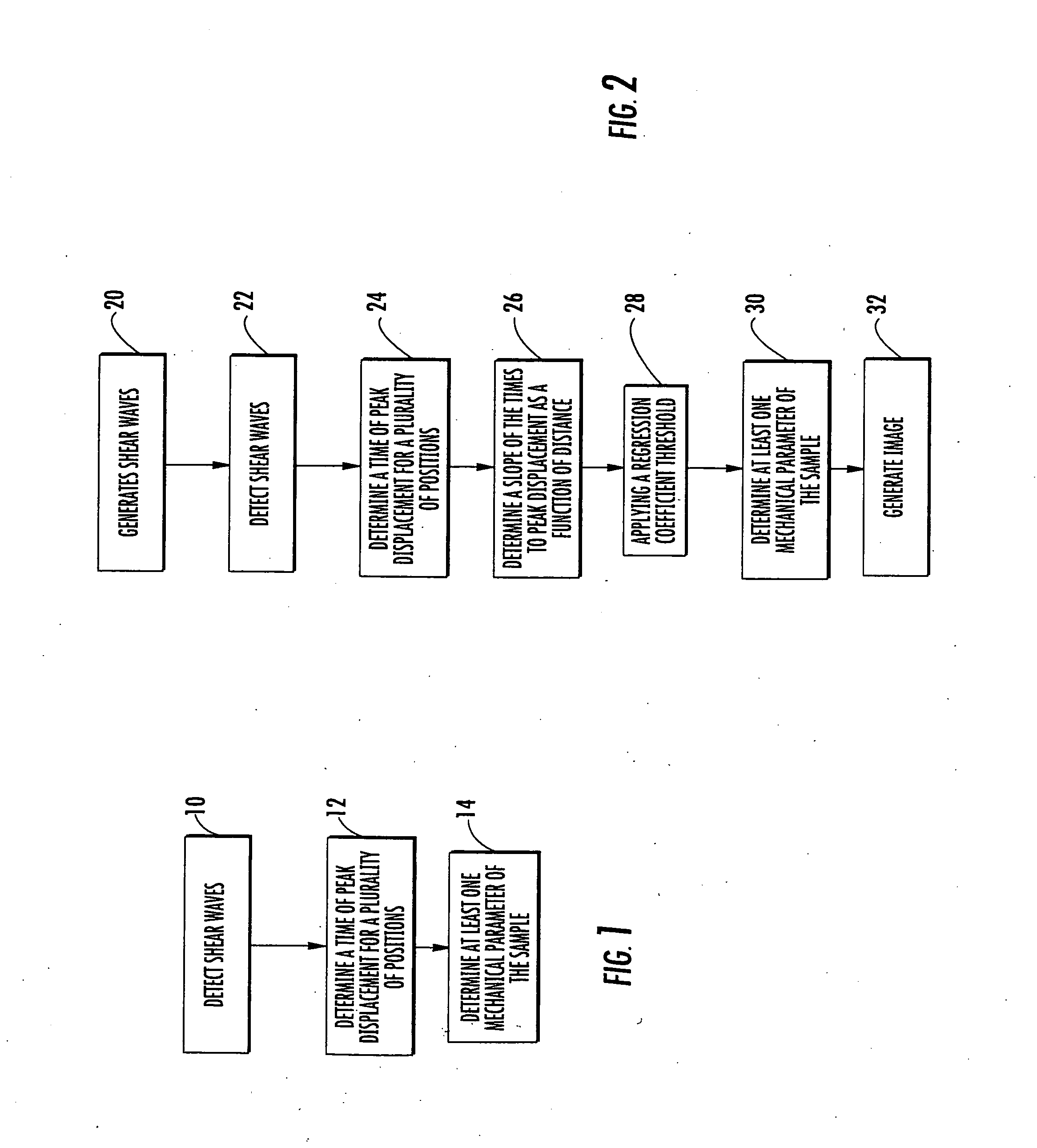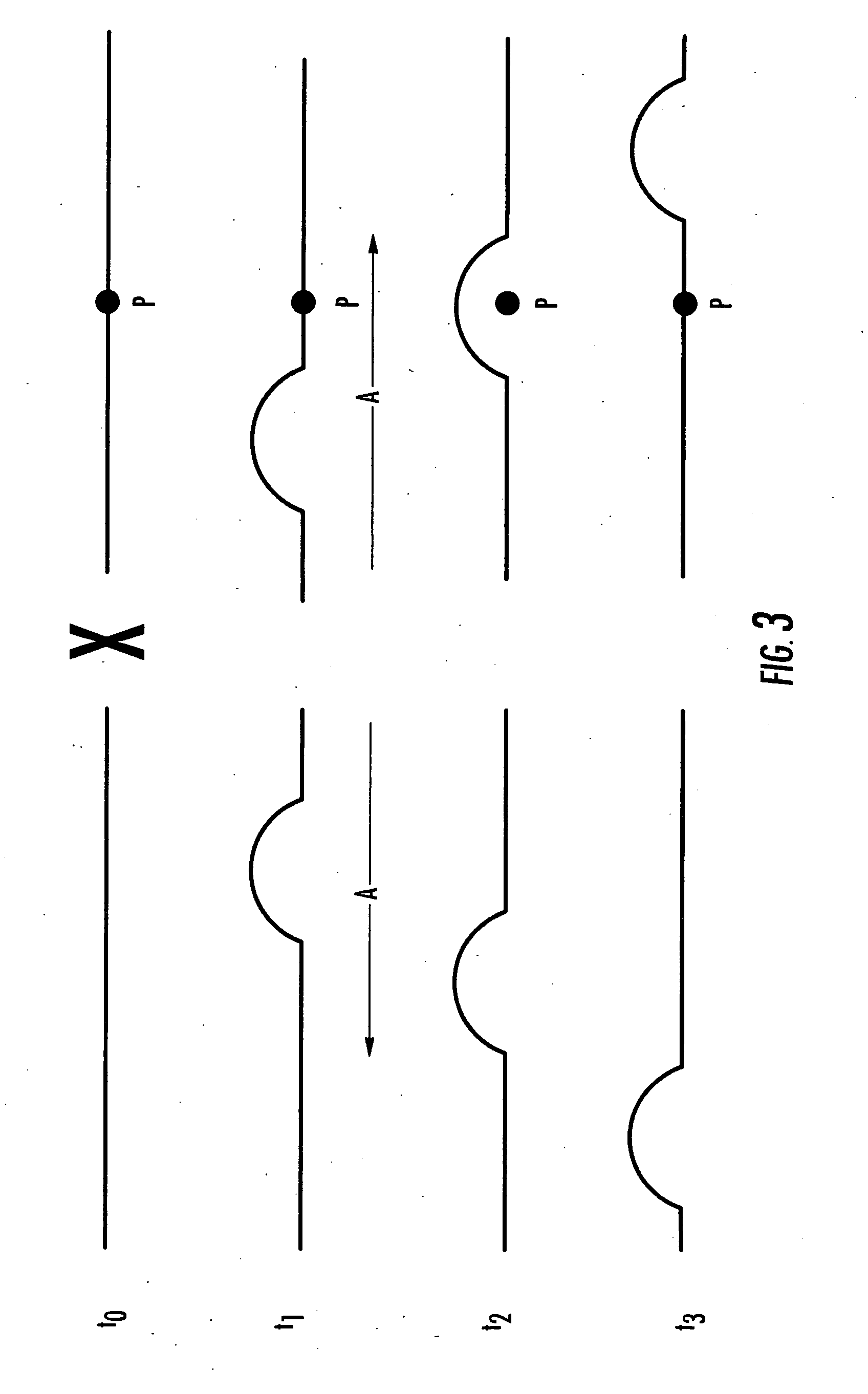Methods, Systems and Computer Program Products for Ultrasound Shear Wave Velocity Estimation and Shear Modulus Reconstruction
a technology of ultrasound and modulus, applied in the field of ultrasound, can solve the problems of inherently risky biopsies, increased risk of bleeding and puncture of critical adjacent organs, and severely limited biopsies
- Summary
- Abstract
- Description
- Claims
- Application Information
AI Technical Summary
Benefits of technology
Problems solved by technology
Method used
Image
Examples
example
[0079]Time to peak (TTP) displacement data in response to impulsive acoustic radiation force outside the region of excitation (ROE) are used to characterize the shear wave speed of a material, which is used to reconstruct the material's shear modulus. The calculation is developed and validated using finite element method (FEM) simulations. Using this calculation on simulated displacement fields, reconstructions for materials with shear moduli (μ) ranging from 1.3-5 kPa are accurate to within 0.3 kPa, while stiffer shear moduli ranging from 10-16 kPa are accurate to within 1.0 kPa. Ultrasonically tracking the displacement data, which introduces jitter in the displacement estimates, does not impede the use of this calculation to reconstruct accurate shear moduli. Using in vivo data acquired intercostally in 20 volunteers, liver moduli have been reconstructed between 0.9 and 3.0 kPa, with an average precision of ±0.4 kPa. These reconstructed liver moduli are consistent with those repor...
PUM
 Login to View More
Login to View More Abstract
Description
Claims
Application Information
 Login to View More
Login to View More - R&D
- Intellectual Property
- Life Sciences
- Materials
- Tech Scout
- Unparalleled Data Quality
- Higher Quality Content
- 60% Fewer Hallucinations
Browse by: Latest US Patents, China's latest patents, Technical Efficacy Thesaurus, Application Domain, Technology Topic, Popular Technical Reports.
© 2025 PatSnap. All rights reserved.Legal|Privacy policy|Modern Slavery Act Transparency Statement|Sitemap|About US| Contact US: help@patsnap.com



